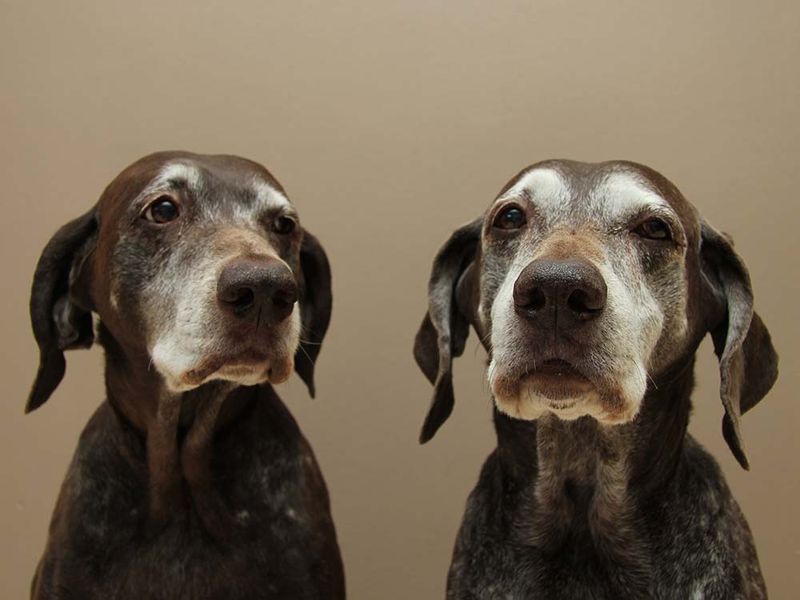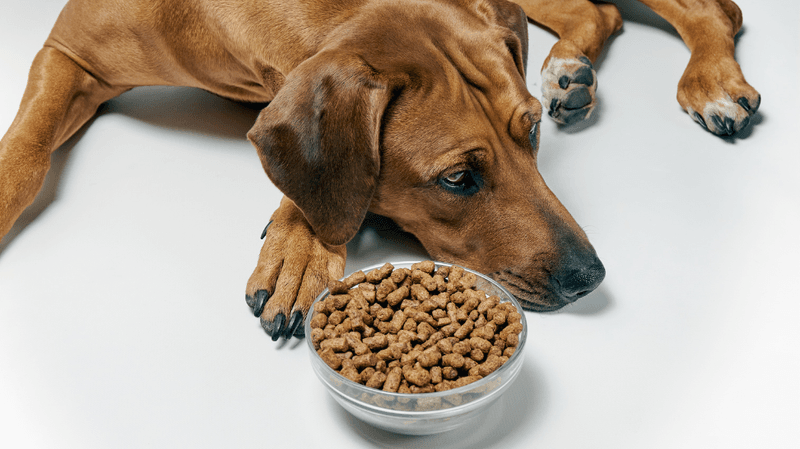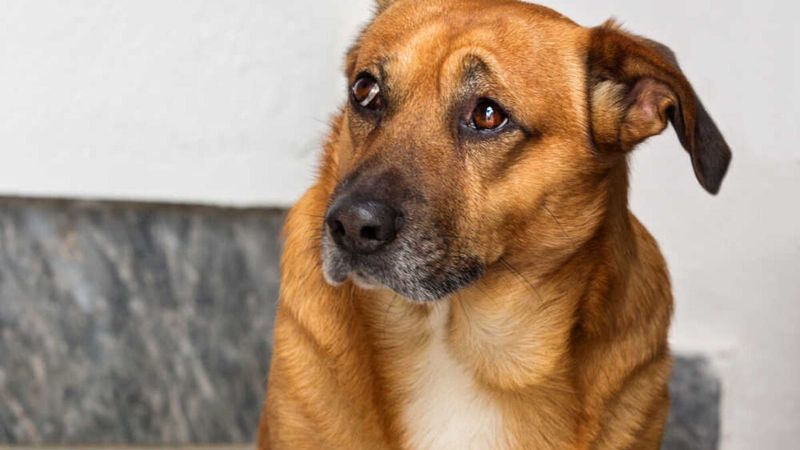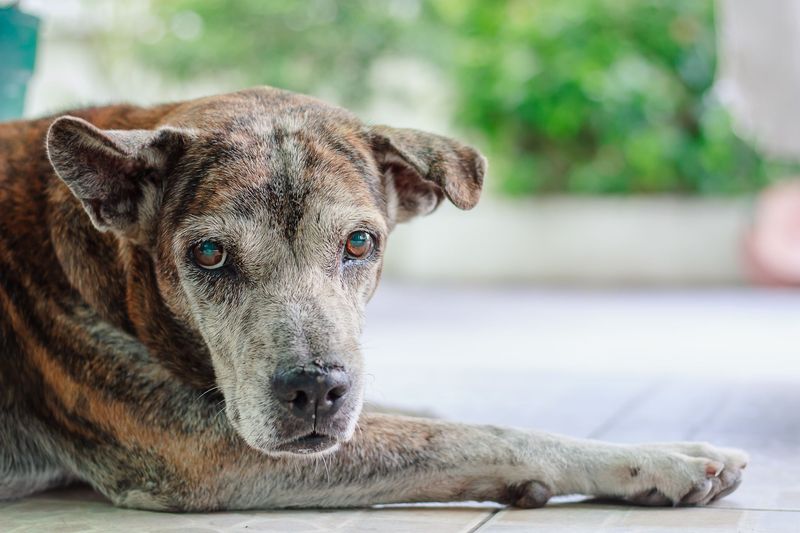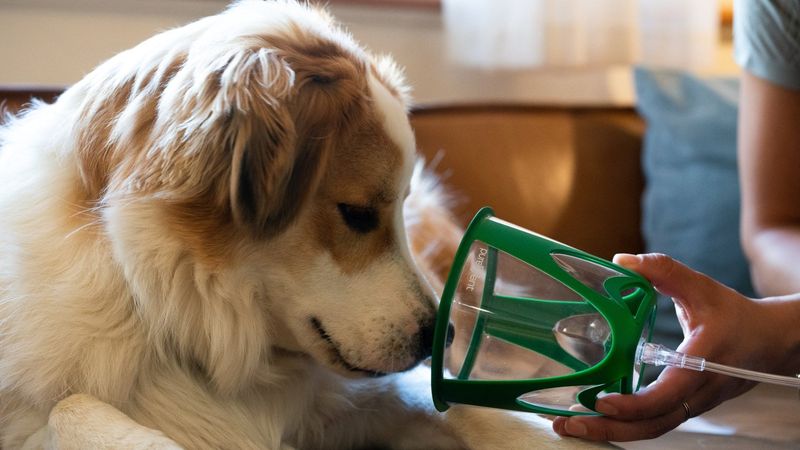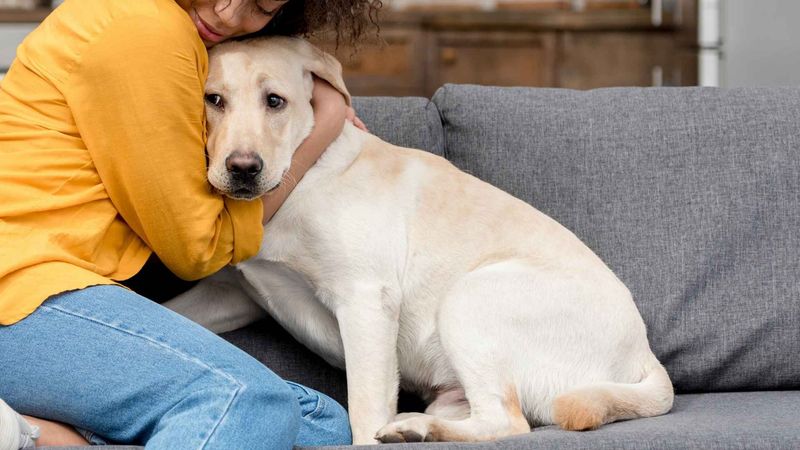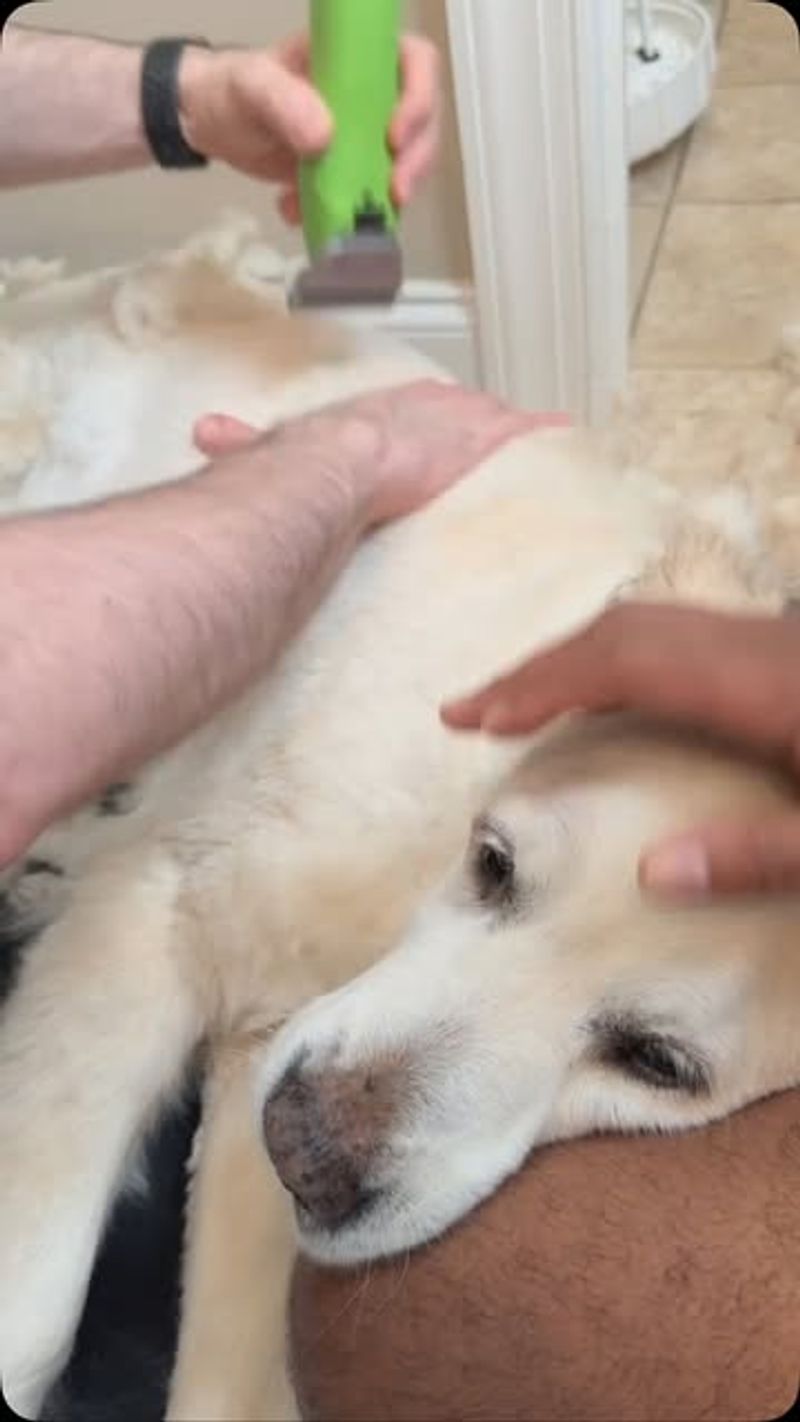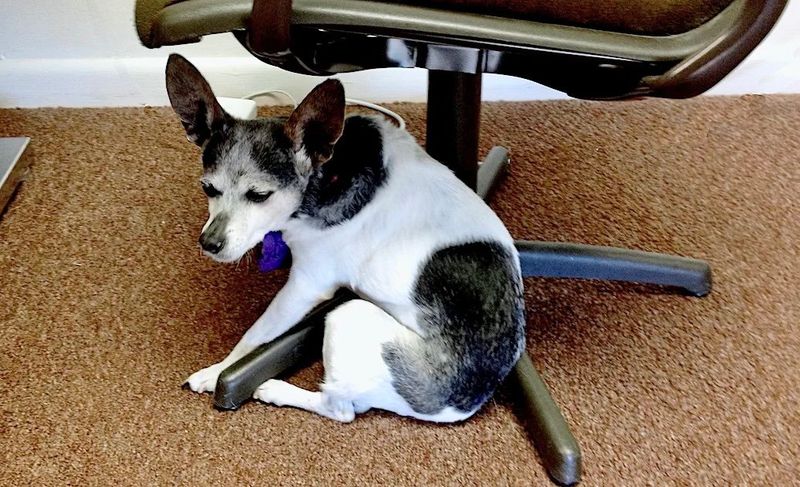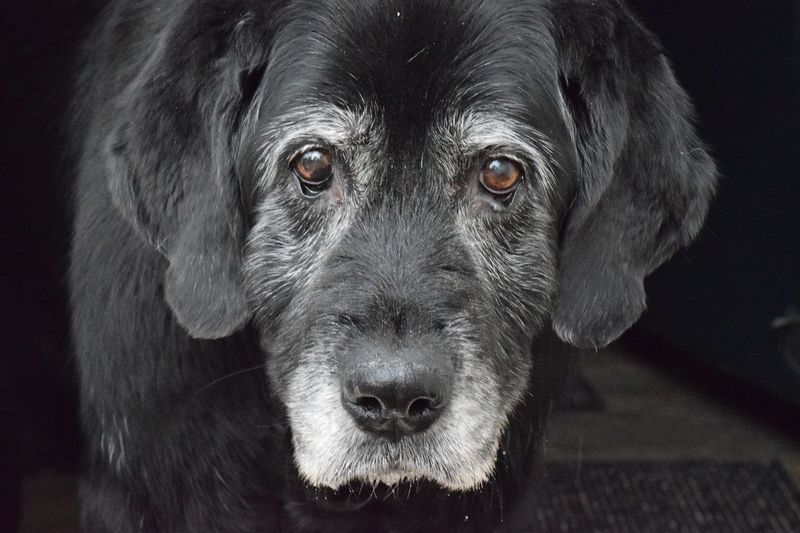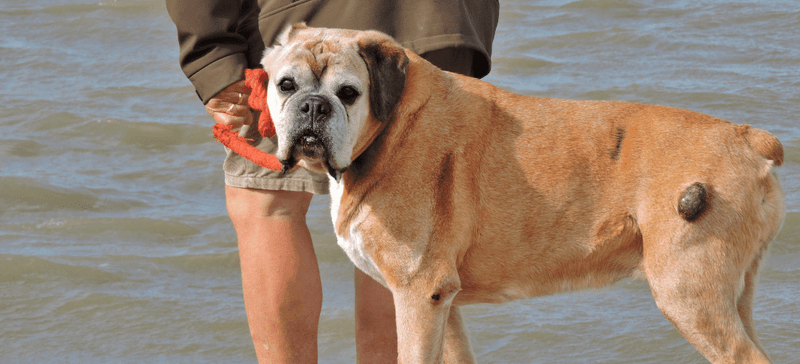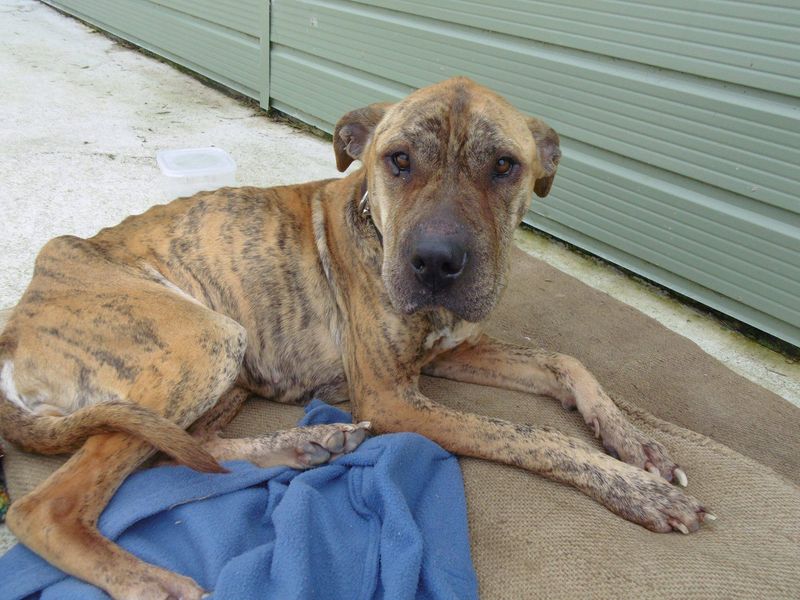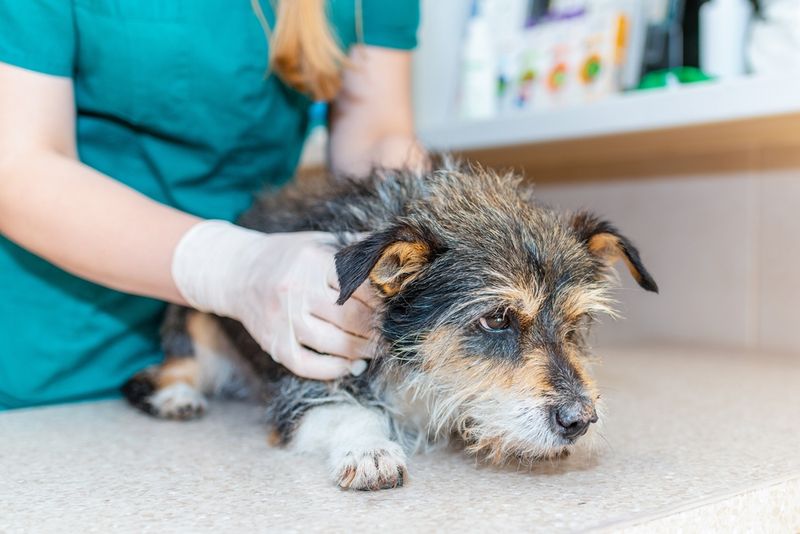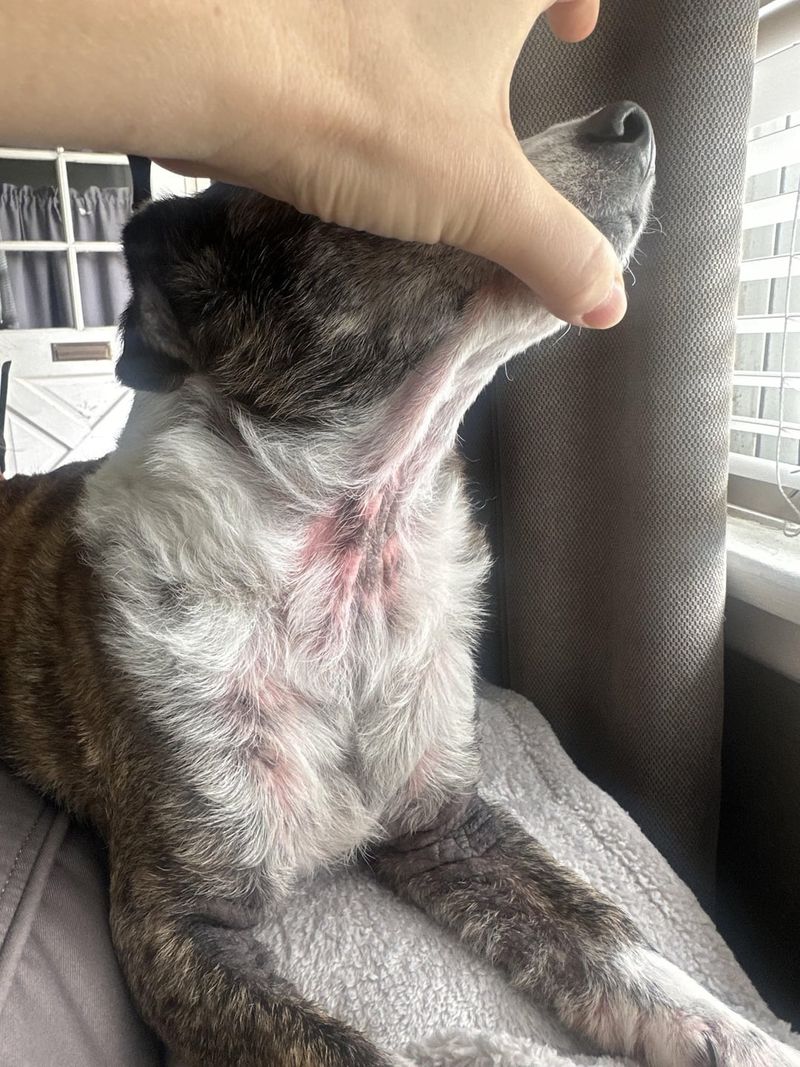Understanding when your dog might be saying goodbye can be heart-wrenching, yet essential. Dogs communicate their feelings through subtle signs, and recognizing these can help prepare you for their farewell. Here are 20 signs that might indicate your beloved companion is nearing their time.
Loss of Interest
Dogs, just like humans, can lose interest in activities they once loved. This change can be subtle yet profound. Imagine your adventurous pup who once leaped for joy at the sight of a leash, now quietly retreating to their bed. Such behavior may indicate a farewell approaching.
This shift often starts with disregarding favorite toys or ignoring your calls to play. The spark in their eyes dims, and their once lively tail wags slowly. It’s a gentle nudge that their energy is waning, guiding you to cherish every remaining moment.
Cherish these calm times, offering comfort in their preferred resting spots.
Increased Sleeping
As dogs age, they may start sleeping more, finding solace in long, restful naps. This increase in slumber is their way of conserving energy. Picture your furry friend basking in a sunbeam, their gentle breaths syncing with nature’s rhythm.
This behavior isn’t merely about fatigue—it’s a sign of tranquility. Where once they chased birds and butterflies, now they dream of those lively days. Let them enjoy these serene moments, wrapped in warmth and peace.
Spend those quiet hours with them, whispering sweet nothings, and acknowledging this natural cycle of life.
Decreased Appetite
The aroma of their favorite meal no longer excites them—this is a poignant sign. Your dog might begin to skip meals or eat significantly less. It’s not just about age, but a gentle way of letting go.
Consider the once eager Labrador, now sniffing their bowl and slowly walking away. This reduction in appetite may suggest discomfort or a diminished zest for life. Offering smaller, tempting treats sometimes helps but doesn’t always revive their interest.
Stay attuned to their health, providing nourishment in other ways, like affection and presence.
Withdrawal from Social Interaction
Social butterflies may turn into solitary beings when nearing their final days. Dogs often seek solitude, choosing quiet corners over bustling family gatherings.
The vibrant beagle, once at the heart of every party, now finds solace in being alone. This withdrawal isn’t a sign of rejection; it’s their way of finding peace. Respect this need for isolation, ensuring they still feel loved and included from a distance.
Offer gentle companionship when they seek it, reinforcing your bond in those precious, shared silences.
Restlessness or Discomfort
Restlessness can signal discomfort in your beloved pet. They may pace or frequently shift positions, unable to find ease. This agitation often reflects internal unease.
Imagine a senior boxer, shifting on their plush bed, searching for comfort amidst their restlessness. It’s heart-wrenching, yet it communicates their need for relief and understanding.
Provide a comforting environment, with supportive bedding and gentle reassurances, helping them find peace in their twilight days.
Loss of Bladder Control
Bladder control issues can become more frequent as dogs age. Accidents may increase, not out of defiance, but due to waning physical control.
Consider the dignified dachshund, now needing extra care as they experience these challenges. Such situations require patience and compassion, adapting routines to accommodate their needs.
Create a forgiving environment, where mishaps are met with kindness rather than frustration, reinforcing your unwavering love and support.
Labored Breathing
Breathing changes, such as labored or shallow breaths, can be a sign of discomfort or declining health. This alteration can be subtle yet significant.
Picture a senior pug, breathing a bit heavier than usual, their chest rising and falling with effort. This symptom warrants gentle attention and possible veterinary guidance.
Stay observant and create a calm atmosphere, offering reassurance through your presence and soothing touch.
Unusual Vocalizations
Vocal expressions may change as dogs age or experience discomfort. Unusual sounds—whines, whimpers, or groans—can indicate unease or confusion.
Imagine an old collie, their once joyful barks replaced by softer, mysterious noises. These vocalizations are their way of communicating, seeking comfort and understanding.
Lend an attentive ear, responding with gentle words and touches, assuring them they’re heard and cherished.
Seeking More Comfort
Older dogs often seek closeness, desiring warmth and affection. They might nestle beside you more frequently, craving the comfort of your presence.
Visualize a senior bulldog, pressing against you on a chilly evening, finding solace in your embrace. This behavior speaks volumes about their need for security and love.
Embrace these moments, offering your undivided attention, letting them know they are treasured.
Changes in Grooming Habits
Dogs may groom less as they age, resulting in a slightly unkempt appearance. It’s not neglect but a sign of their changing abilities.
Picture a senior poodle, their once immaculate coat needing more frequent care. This shift requires gentle grooming assistance, reinforcing their dignity and comfort.
Offer regular grooming sessions, combining care with affection, ensuring they feel respected and loved.
Confusion or Disorientation
Cognitive changes can lead to confusion or disorientation in older dogs. They may wander aimlessly or forget familiar routes.
Imagine a senior border collie, pausing in the middle of a room, with a puzzled expression. This change in behavior reflects their need for supportive navigation.
Provide gentle guidance, maintaining a consistent environment to ease their transitions and offer familiarity.
Loss of Mobility
Mobility issues often emerge as dogs age, affecting their ability to navigate daily activities. They may struggle with stairs or become hesitant to move.
Visualize an elderly German shepherd, facing challenges as they attempt to climb familiar steps. It’s a poignant reminder of their physical limitations.
Assist with patience, providing support and adaptations to maintain their dignity and comfort.
Swelling or Lumps
New swellings or lumps can appear as dogs age, signaling potential health issues. These changes require careful observation and possible veterinary consultation.
Picture a senior bulldog, with a new, soft lump on its side, being gently examined by a concerned owner. It’s a subtle prompt to remain vigilant about their health.
Regularly check for such changes, addressing them promptly to ensure your pet’s well-being.
Lethargy or Weakness
Lethargy and weakness often accompany aging, reflecting a dog’s reduced stamina. Activities that once excited now exhaust them.
Consider a senior cocker spaniel, lounging on the porch, watching the world pass by with weary eyes. This shift in energy levels speaks of their slowing pace.
Respect their need for rest, creating a comfortable space for relaxation and rejuvenation.
Change in Eye Appearance
Alterations in eye appearance, such as cloudiness or redness, can indicate aging or health changes. These visual signs are often accompanied by decreased vision.
Picture an elderly husky, its eyes clouded over yet still holding a wise gaze. This transformation may impact their interaction with the world.
Ensure regular eye care and understanding, guiding them through any challenges they face.
Weight Loss
Unintentional weight loss can occur as dogs age, often due to appetite changes or health issues. It’s a visible indicator of underlying challenges.
Imagine a senior dalmatian, their frame noticeably slimmer, resting quietly. This physical change emphasizes the need for attentive health monitoring.
Consult a veterinarian to address any potential concerns, ensuring their nutritional needs are met.
Increased Thirst
Older dogs might exhibit increased thirst, indicating possible health issues like kidney dysfunction. This shift in behavior shouldn’t be overlooked.
Visualize an elderly beagle, frequently sipping from their water bowl, with curiosity and need. This change demands attention and possible medical evaluation.
Monitor their intake, ensuring they remain hydrated while exploring any underlying causes.
Changes in Barking
A change in barking patterns—becoming quieter or more frequent—can reflect aging or discomfort. This vocal shift requires attentive observation.
Consider a senior terrier, whose once fierce bark now softened with age. This alteration signals a need for gentle communication and understanding.
Respond with attentive care, recognizing their evolving ways of interaction and expression.
Seizures
Seizures can occur in older dogs due to neurological changes or underlying conditions. It’s a distressing experience requiring immediate attention.
Picture a senior poodle, suddenly trembling, with a calm owner ensuring their safety and offering comfort post-episode. This situation highlights the importance of vigilance and veterinary guidance.
Work closely with a vet to manage and understand these episodes, providing a safe environment.
Dull Coat or Skin Issues
A dull coat or skin changes can indicate aging or health concerns. These external signs reflect internal wellbeing and require gentle care.
Visualize a senior golden retriever, its coat losing some luster, receiving loving grooming attention. This care reinforces their comfort and self-esteem.
Maintain regular grooming and checkups, supporting their health through tender, attentive care.

